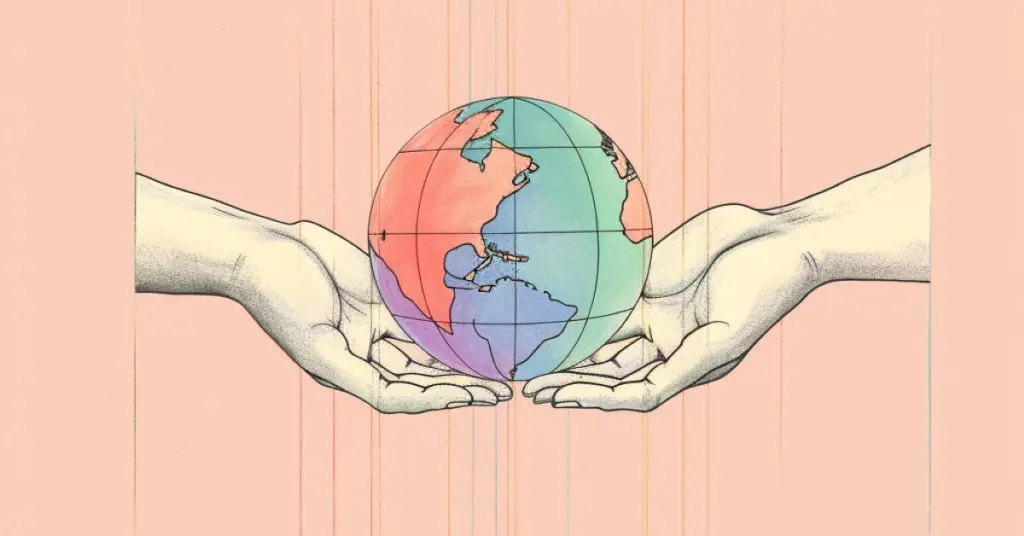Many companies and individuals have started exploring the voluntary carbon market as a means of offsetting their carbon footprints. In these markets, businesses and individuals can purchase carbon credits from projects that reduce greenhouse gas emissions. But just how big is this market, and how effective is it in mitigating climate change? Do prices vary much? What are the differences between regulated and voluntary markets? Do certain jurisdictions produce higher-quality offsets than others?
How Big is the Voluntary Carbon Market?
The voluntary carbon market has gained momentum in recent years, with a growing number of companies and individuals seeking to offset their carbon emissions. This has led to a significant increase in the size of the market as more and more people become aware of the impact of their carbon footprint on the environment. If you’re interested in first learning more about personally contributing to this effort, take a look at this article on How to Buy Personal Carbon Offsets. The demand for carbon offsets could increase by a factor of 15 by 2030 and by a factor of up to 100 by 2050, showing the increasing interest and reliance on voluntary carbon markets in the fight against climate change1. Have you thought about investing in carbon offsets? You can do so easily by clicking here.
The increasing number of companies committing to reducing their carbon emissions has helped drive the growth of the voluntary carbon market. Many of these companies are setting ambitious targets to become carbon neutral or even carbon negative, and are turning to the voluntary carbon market to help them achieve these goals. For example, as of 2021, over 1,000 businesses worldwide have joined the Science Based Targets Initiative (SBTi)2. Other companies are leveraging technology to ensure transparency and efficiency, click here to learn more.
Growth in the Voluntary Carbon Market
Another factor driving the growth of the voluntary carbon market is the increasing awareness among consumers about the impact of their purchasing decisions on the environment. Many consumers are now choosing to buy products and services from companies committed to reducing their carbon footprint and are willing to pay a premium for these products and services. In fact, a 2020 survey by IBM found that 57% of consumers were willing to change their purchasing habits to help reduce negative environmental impact3.
According to a report by Ecosystem Marketplace, the voluntary carbon market grew by 6% in 2019, with transactions worth $252 million. This represents a significant increase from the $237 million in transactions recorded in 20184 and could be the harbinger of higher voluntary carbon market prices to come.
The voluntary carbon market is still relatively small compared to the larger carbon market, which includes carbon offsetting schemes such as the European Union Emissions Trading System (EU ETS). However, the voluntary carbon market is growing at a faster rate than the mandatory carbon market and is expected to continue to do so in the coming years. The top countries for voluntary carbon offsetting in 2019 were the United States, the United Kingdom, and Canada, which collectively accounted for 54% of all transactions. Other countries, such as Germany, Switzerland, and Japan, also recorded significant transactions.
The voluntary carbon market is an important tool in the fight against climate change and is likely to play an increasingly important role in the coming years as more and more companies and individuals seek to reduce their carbon footprint.
Carbon Market Prices: A Search for Value
A wide variety of factors such as the project type, location, and the type of carbon credit determine the asset price. In general, prices can range from a few cents to several dollars per ton of CO2 reduced. The average price of a voluntary carbon credit was $3.50 per ton in 20195. To get started buying carbon credits right away, click here.
However, the prices can vary greatly among different types of projects. For instance, renewable energy projects are often more expensive than afforestation or conservation projects. This is because renewable energy projects require significant investments in infrastructure, such as wind turbines or solar panels, which can be costly. On the other hand, afforestation projects involve planting trees, which is a relatively low-cost activity. In 2020 it was found that afforestation and reforestation projects averaged $3/tonne, while renewable energy projects averaged $0.9/tonne6.
Moreover, the location of the project can also impact the price of carbon credits. Projects in developed countries tend to have higher prices than those in developing countries. This is due to the higher cost of living and labor, as well as stricter environmental regulations in developed countries. However, despite an increase in the use of these offset over the last few years, of the “35 percent of 3,133 companies with net zero emissions targets [who] had bought offsets, only 10 percent had purchased a “meaningful” amount, defined as more than 10,000, over the past three years”7.
Price Varies by Type
Another factor that can affect carbon market prices is the type of carbon credit being used. For example, some companies offer higher prices for credits that meet additional standards, such as Gold Standard or Verified Carbon Standard. These standards ensure that the carbon credits are of high quality and have been verified by independent third parties.
In recent years, there has been a growing demand for carbon credits from businesses and individuals looking to reduce their carbon footprint. This has led to an increase in the number of carbon offset projects, which has in turn driven down the price of carbon credits. If you’re looking at investing, this article may be useful: Investing in Carbon Credits: What You Need to Know. As more and more companies and individuals invest in carbon offset projects, it is likely that the price of carbon credits will continue to increase. Have you invested in carbon offsets yet? Find out what they have to offer by clicking here.
Carbon Market Size: The Voluntary Market is Catching Up
 The voluntary carbon market may not be as large as the regulated carbon market, but its growth rate is impressive. Estimating the total size of the voluntary carbon market can be difficult but most believe it is smaller than the regulated market, which is worth billions of dollars annually. Nevertheless, the voluntary market has been gaining traction in recent years as more companies look to offset their carbon emissions voluntarily.
The voluntary carbon market may not be as large as the regulated carbon market, but its growth rate is impressive. Estimating the total size of the voluntary carbon market can be difficult but most believe it is smaller than the regulated market, which is worth billions of dollars annually. Nevertheless, the voluntary market has been gaining traction in recent years as more companies look to offset their carbon emissions voluntarily.
The regulated carbon market is primarily driven by government regulations, such as the European Union Emissions Trading System (EU ETS) and the Regional Greenhouse Gas Initiative (RGGI) in the United States. The EU ETS covers around 45% of the EU’s greenhouse gas emissions, and in the United States, RGGI states have reduced power sector CO2 pollution by 45% since 20058. These programs require companies to purchase carbon allowances or credits to offset their emissions, creating a demand for carbon offsets. Analysts expect the regulated market to continue growing as more countries implement similar programs to reduce their carbon footprint. For more information on understanding the carbon credits market, click here.
On the other hand, the companies and individuals who choose to offset their emissions drive the voluntary carbon market. This market allows companies to purchase carbon offsets from projects that reduce or remove greenhouse gas emissions, such as renewable energy projects or forest conservation initiatives. While the voluntary market is smaller than the regulated market, it has the potential to grow as more companies become aware of their carbon footprint and seek to reduce it. Feel like investing in voluntary carbon offsets? You can get started by clicking here.
New Standards and Technologies
The increasing demand from consumers for sustainable and environmentally friendly products has contributed to the growth of voluntary carbon markets. Companies that can demonstrate their commitment to reducing their carbon footprint may have a competitive advantage in the marketplace. Some companies may also choose to offset their emissions as part of their corporate social responsibility and integrity initiatives.
The development of new carbon offset standards and methodologies has also supported the growing voluntary carbon market. These standards ensure that carbon offsets are credible and meet certain criteria such as additionally and permanence. The emergence of new standards such as the Verified Carbon Standard (VCS) and the Gold Standard, has helped increase confidence in the voluntary market, attract new buyers, and keep the voluntary carbon markets in the news, in front of investors. If you’d like to consider investing in carbon offsets, you can do so easily by clicking here.
The voluntary carbon market is smaller than the regulated market but it is growing at an impressive rate. Companies and individuals who voluntarily offset their emissions drive the market and analysts expect this growth to continue as more companies become aware of their carbon footprint and seek to reduce it. The development of new carbon offset standards and increasing demand from consumers for sustainable products contributed to a 20% growth of the voluntary market in 20229. For a step-by-step guide to buying personal carbon offsets, click here.
Countries: Tackling Hard Problems One Region at a Time
 The voluntary carbon market is a global platform for carbon offsetting that is not limited to any specific region or country. Projects that generate carbon credits can be found across the world with some of the top carbon mitigation projects coming out of Brazil, China, and India.
The voluntary carbon market is a global platform for carbon offsetting that is not limited to any specific region or country. Projects that generate carbon credits can be found across the world with some of the top carbon mitigation projects coming out of Brazil, China, and India.
Brazil, for example, is home to the Amazon Rainforest, which is the largest tropical rainforest in the world. The country has implemented several projects that aim to reduce deforestation and promote sustainable land use practices. These projects generate carbon credits, which they sell in the voluntary carbon market, providing a source of revenue for local communities and contributing to the fight against climate change.
China has implemented several projects that focus on renewable energy. The country is the world’s largest producer of solar panels and has invested heavily in wind power. These projects generate carbon credits by displacing fossil fuel-based energy sources and promoting the use of clean energy. If you feel like starting to invest in carbon offsets, you can start by clicking here.
India has also implemented several projects focusing on renewable energy, such as wind and solar power. The country has set a target of achieving 175 GW of renewable energy capacity by 2022, which will require an investment of around $200 billion10. These projects generate carbon credits, which they sell in the voluntary carbon market, providing a source of revenue for project developers and contributing to India’s transition to a low-carbon economy.
A New Player Enters the Game
However, the United States registered the largest number of voluntary carbon offset projects in 2019. The country has implemented several projects that focus on a range of activities, such as reforestation, methane capture, and energy efficiency. These projects generate carbon credits, which they sell in the voluntary carbon market, providing a source of revenue for project developers and contributing to the fight against climate change. Projects registered in the United States also typically provide more transparency and accessibility than those in overseas markets. As the voluntary carbon offset market matures, we will see a higher priority placed on value and thus more emphasis on the companies and organizations bringing those assets to market. The United States is positioning itself to be one of the key players in these burgeoning global markets.
Conclusion
Companies and individuals use the voluntary carbon market every day to offset their carbon emissions. Each year the voluntary markets grow and now process millions of dollars in transactions annually. Over the coming decade, that figure will likely increase many times over. And because they aren’t limited to any specific region or country, voluntary carbon markets are also uniquely positioned to benefit from the rapid increases in technology that will allow for new and better methods to decarbonize the world. The future is bright for the voluntary carbon markets. If you would like to invest in carbon offsets, you can easily do so by clicking here.
References
- “Voluntary Carbon Markets: Levelling Up”, published by the Taskforce on Scaling Voluntary Carbon Markets
- Collaboration between CDP, the United Nations Global Compact, World Resources Institute (WRI), and the World Wide Fund for Nature (WWF), committing to align their carbon reduction goals with the best available science. (“Companies Taking Action”, Science Based Targets initiative).
- IBM Institute for Business Value, “Meet the 2020 consumers driving change”
- “State of the Voluntary Carbon Markets 2019″, Ecosystem Marketplace
- “State of the Voluntary Carbon Markets 2019”, Forest Trends’ Ecosystem Marketplace
- “Global voluntary carbon markets growth and outlook”, Climate Markets and Investment Association.
- https://www.ft.com/content/fd14defe-91c4-41a1-ac2e-5857af93d49d
- “The EU Emissions Trading System (EU ETS)”, European Commission; “The Investment of RGGI Proceeds in 2018”, Regional Greenhouse Gas Initiative).
- Global Offset Research Alliance, “Global Carbon Market Report 2022”
- “India’s Renewable Energy Sector”, Ministry of New and Renewable Energy, Government of India
- Voluntary Carbon Market: Price, Growth, Size and News - December 7, 2023
- Investing in Carbon Credits: What You Need to Know - December 6, 2023
- Buy Personal Carbon Offsets and Reduce Your Environmental Impact: A Step-by-Step Guide - December 5, 2023





